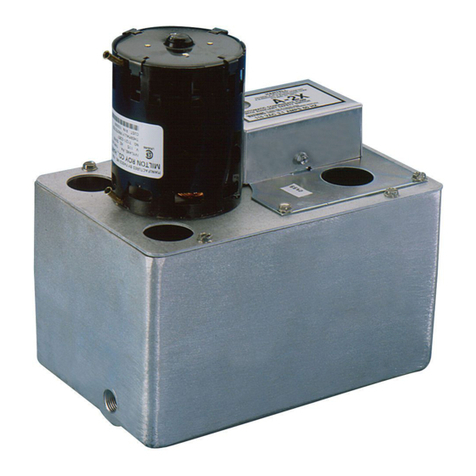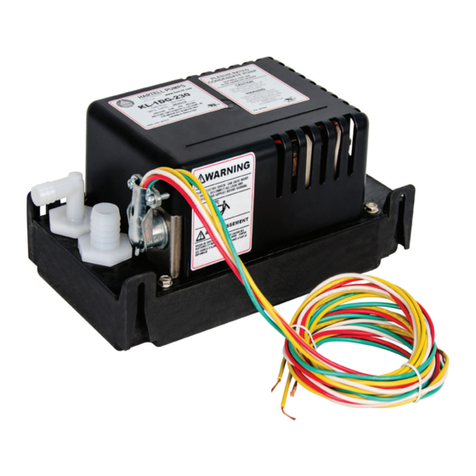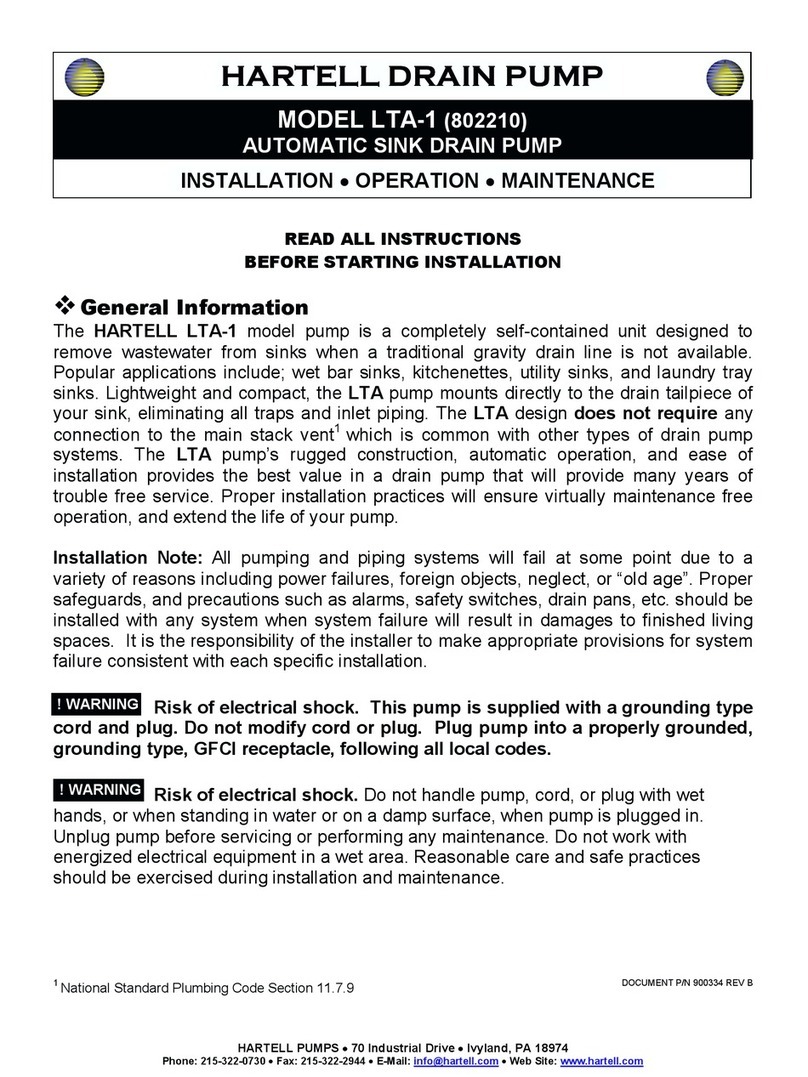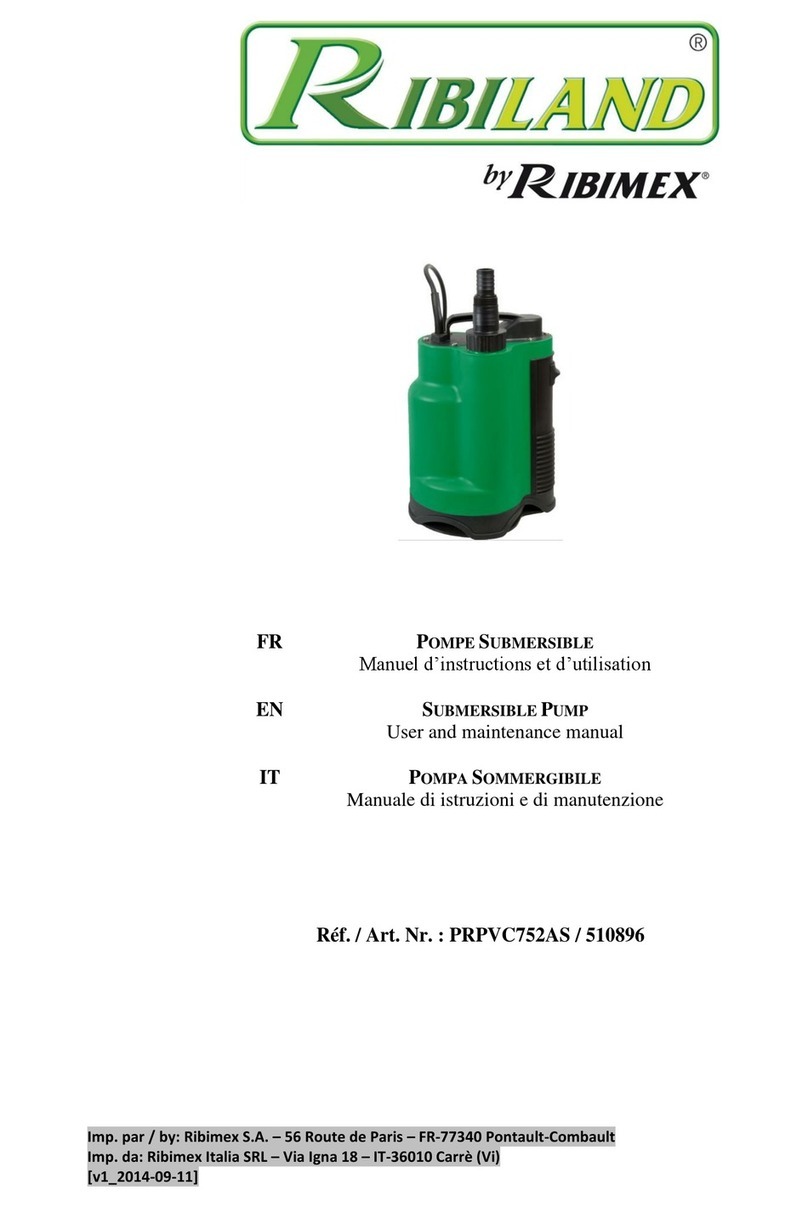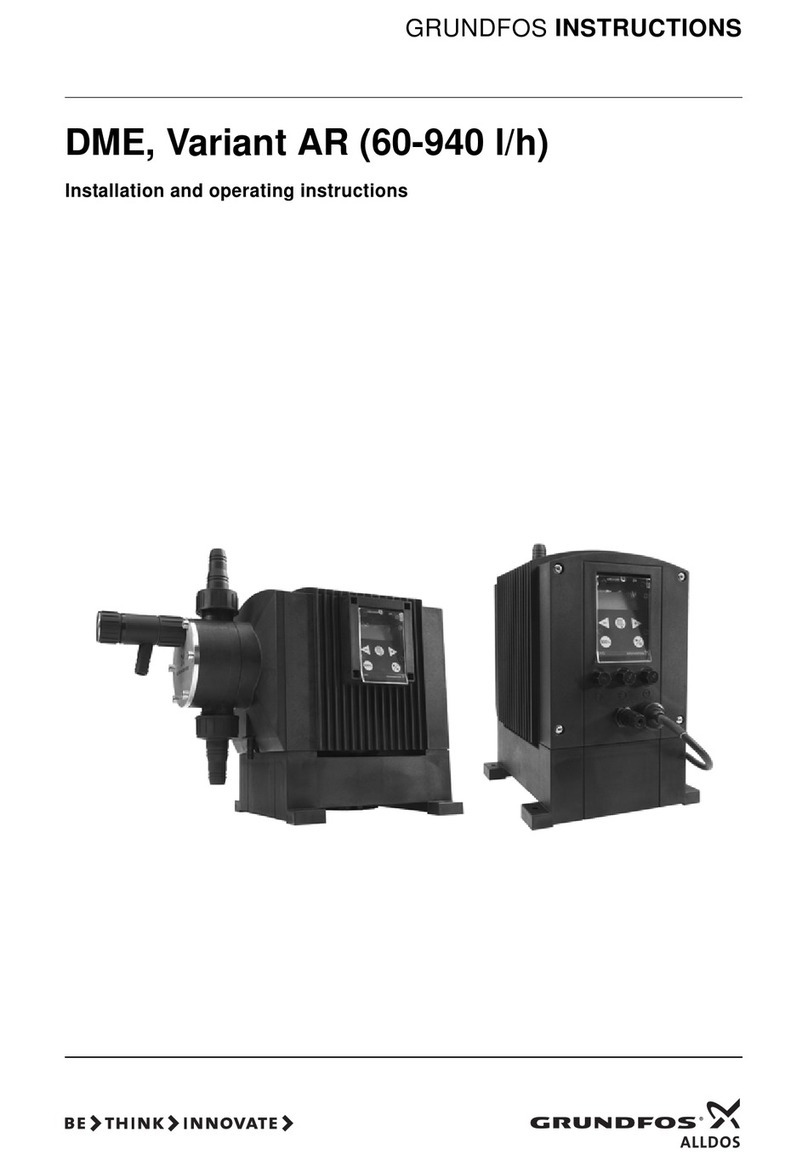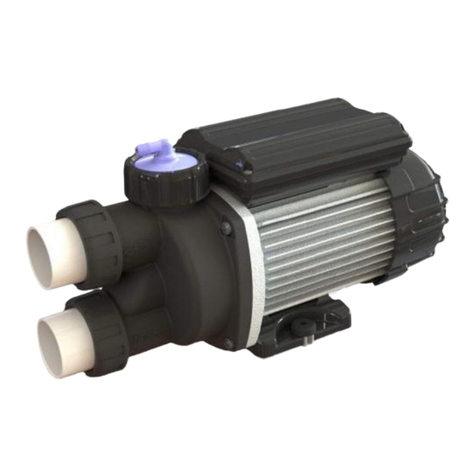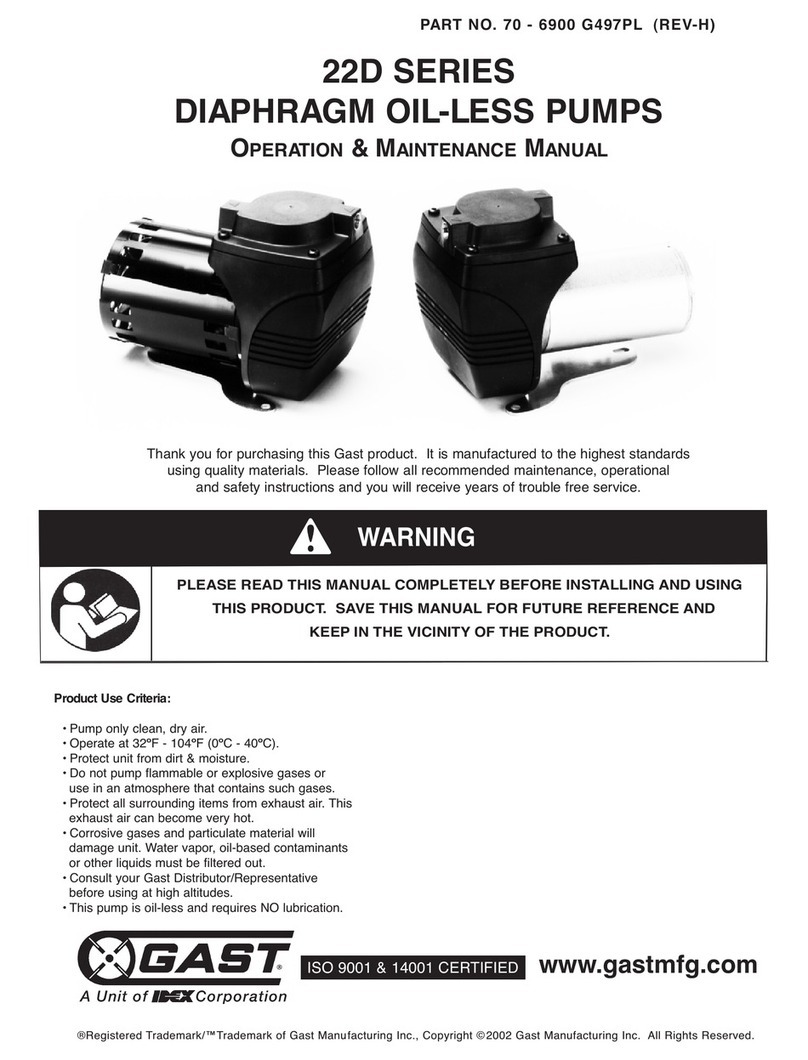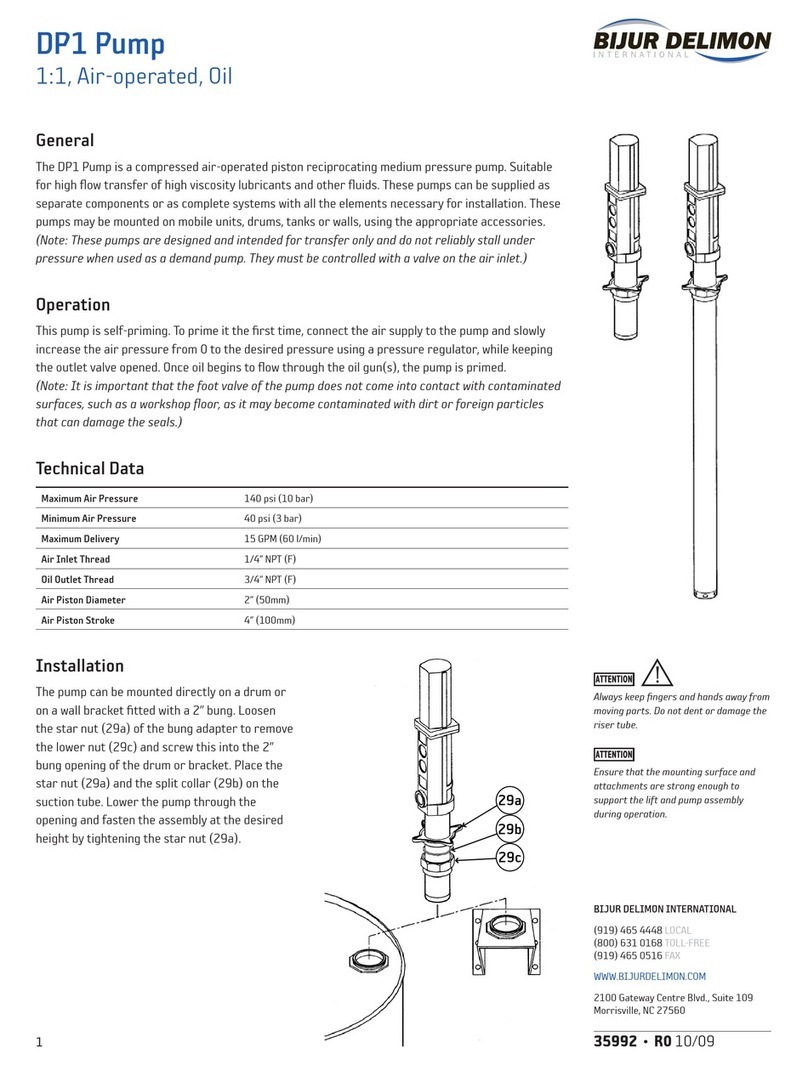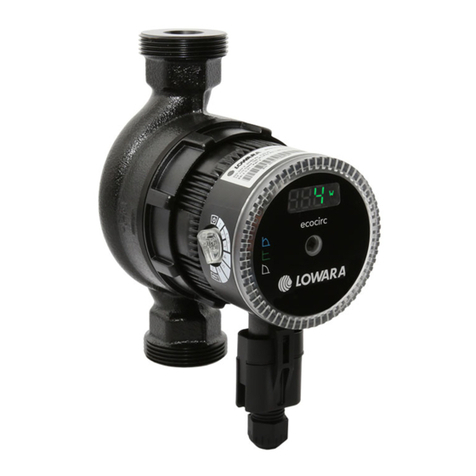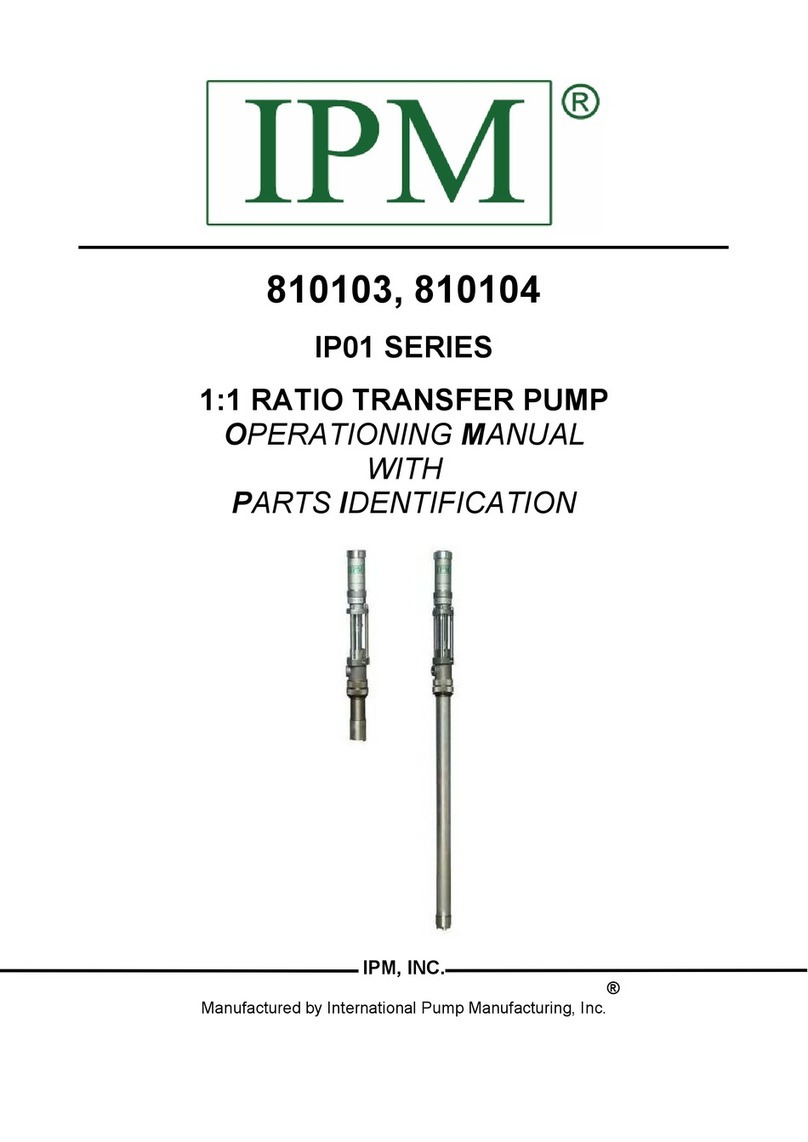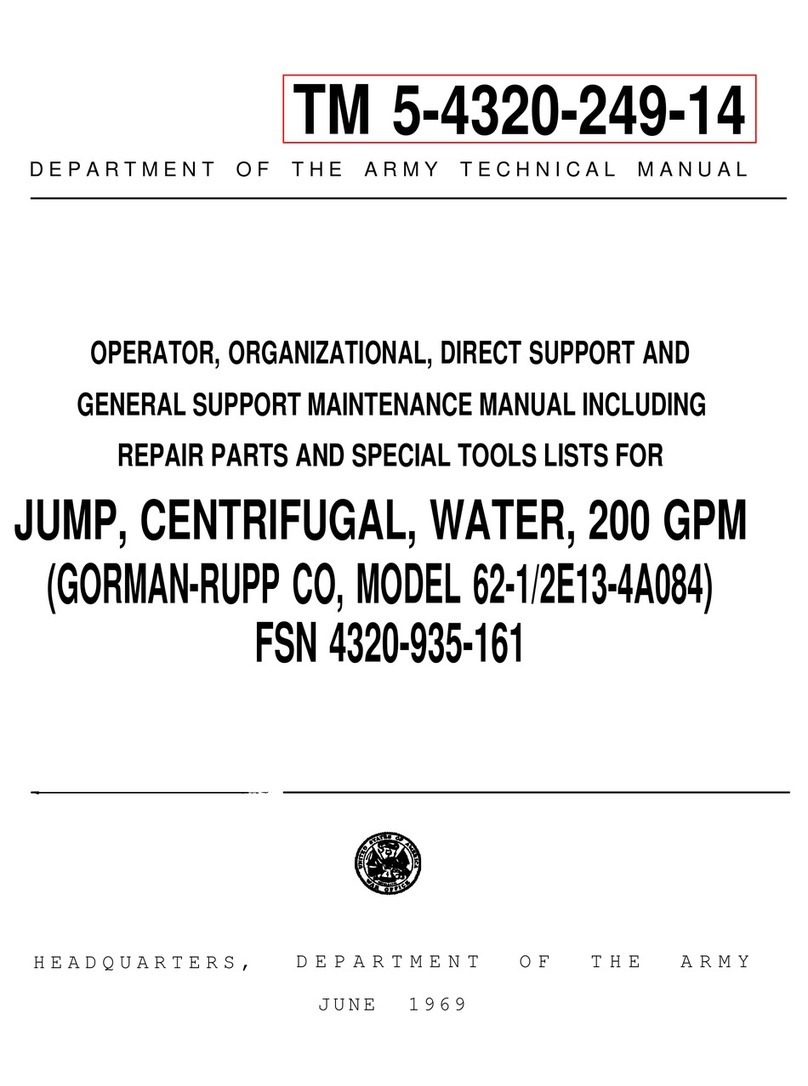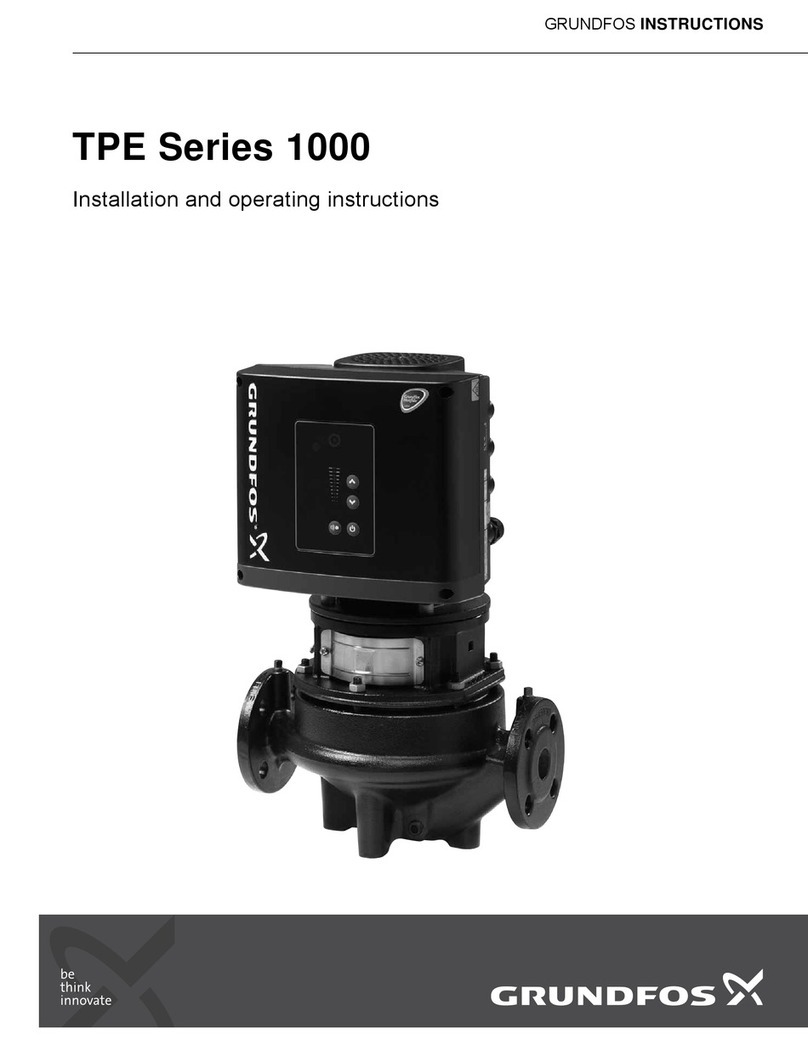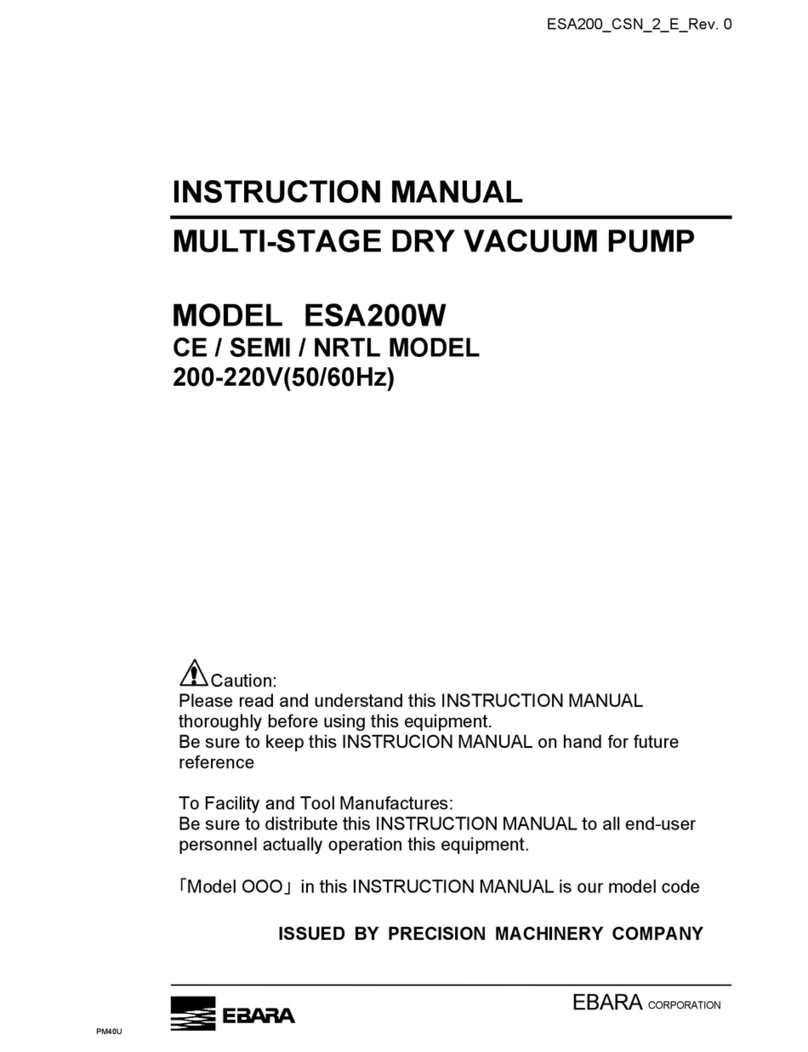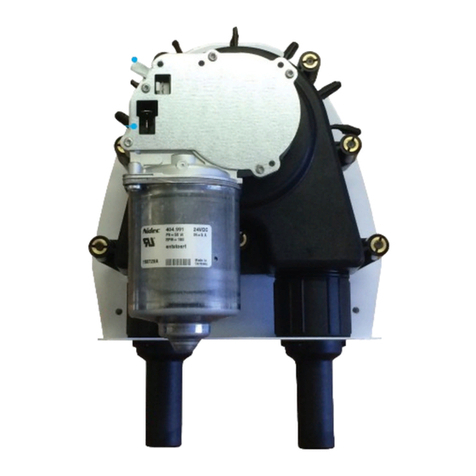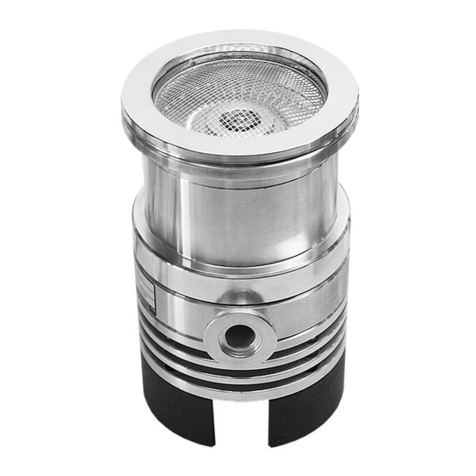Literature # 900951 2019
INSTALLATION
Carefully unpack the pump and select a mounting location on the wall, the case of the air conditioner, or floor. The
pump must be level and the inlet must be below the lowest drain, either coil or furnace. If wall or case mounting, use
the mounting tabs on either side of the reservoir to secure the pump.
PIPING—Run flexible tubing or pipe from
the evaporator and furnace to the pump.
Insert the pipe into the drain inlet hole.
Make sure the pipe does not interfere
with the float. Cut an angle on the inlet
pipe so that it doesn’t close off against
the bottom of the pump. See Figure 1 –
exploded detail.
Connect 3/8” ID tubing to the barbed
check valve. Extend this tubing straight
up as high as necessary. (Do not extend
this tubing past the head/GPH of the
pump installed). Do not kink the tubing,
as this will block the flow. From this high
point, slope the discharge tubing
downward to a point above the drain,
then turn down and extend to a point
below or level with the bottom of the
condensate pump. If it is not possible to slope the discharge tubing downwards, make an inverted “U” trap directly
above the pump at the highest point. (Figure 1)
ELECTRICAL CONNECTIONS—review precautions on previous page
LINE VOLTAGE—Connect power cord to the proper voltage as indicated on the motor nameplate. Connect only to a
source of constant power, not an intermittent source such as a fan or limit
control circuit.
LOW VOLTAGE—AUXILIARY SAFETY SWITCH–Connect the leads of
auxiliary safety switch to the thermostat control circuit of the air
conditioner/furnace. This will disrupt the thermostat demand in a high-
water condition. (Figure 2) CAUTION –Thermostat demand disruption
should not be utilized if cooling or heating requirements are a necessity.
An alarm system should be used with the auxiliary switch instead.
OPERATION
After proper installation, the operation of the HARTELL condensate pump is automatic. Water is collected in the
reservoir and pumped out when the float raises to a pre-set point. As the water level goes down the float turns off
the motor at another pre-set point. Under most circumstances the pump requires little maintenance for efficient
operation. If a problem occurs, please refer to the maintenance instructions below.


